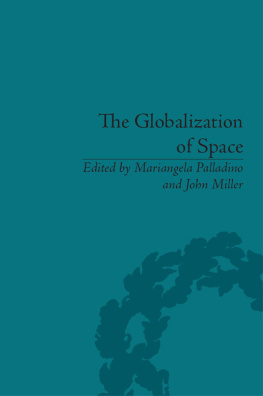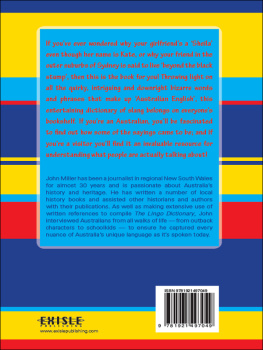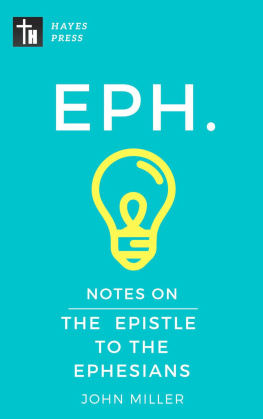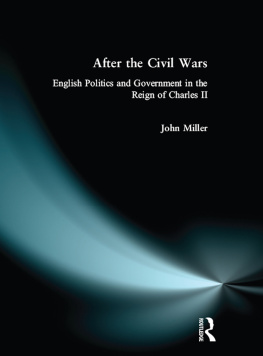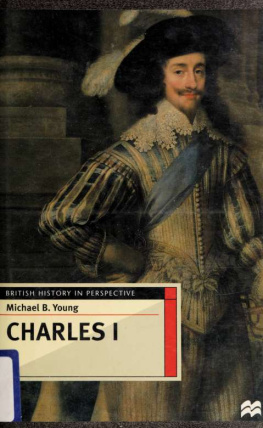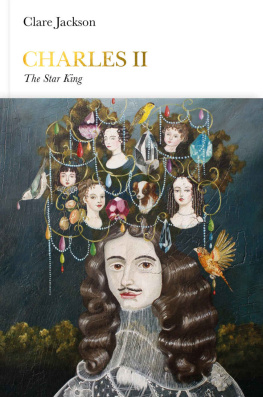THE RESTORATION AND THE ENGLAND OF CHARLES II
The Restoration and the England of Charles II
SECOND EDITION
JOHN MILLER

First published 1985 by Addison Wesley Longman Limited
Second edition 1997
Published 2014 by Routledge
2 Park Square, Milton Park, Abingdon, Oxon OX14 4RN
711 Third Avenue, New York, NY 10017, USA
Routledge is an imprint of the Taylor & Francis Group, an informa business
Copyright 1985, 1997, Taylor & Francis.
The right of John Miller to be identified as the author of this Work has been asserted by him in accordance with the Copyright, Designs and Patents Act 1988.
All rights reserved. No part of this book may be reprinted or reproduced or utilised in any form or by any electronic, mechanical, or other means, now known or hereafter invented, including photocopying and recording, or in any information storage or retrieval system, without permission in writing from the publishers.
Notices
Knowledge and best practice in this field are constantly changing. As new research and experience broaden our understanding, changes in research methods, professional practices, or medical treatment may become necessary.
Practitioners and researchers must always rely on their own experience and knowledge in evaluating and using any information, methods, compounds, or experiments described herein. In using such information or methods they should be mindful of their own safety and the safety of others, including parties for whom they have a professional responsibility.
To the fullest extent of the law, neither the Publisher nor the authors, contributors, or editors, assume any liability for any injury and/or damage to persons or property as a matter of products liability, negligence or otherwise, or from any use or operation of any methods, products, instructions, or ideas contained in the material herein.
ISBN 13: 978-0-582-29223-9 (pbk)
British Library Cataloguing in Publication Data
A catalogue record for this book is available from the British Library
Library of Congress Cataloging-in-Publication Data
Miller, John, 1946
The restoration and the England of Charles II / John Miller. -- 2nd ed.
p. cm.
Originally published: London: New York: Longman, 1985, in series: Seminar studies in history.
Includes bibliographical references (p.) and index.
Summary: Chronicles the twenty-five year reign of Charles II under whose rule Parliament kept most of the powers it had won under Cromwell and shared governing authority with the king.
ISBN 0-582-29223-9 (paper: alk. paper)
1. Great Britain-History--Charles II, 16601685. 2. Great Britain--Politics and government--16601688. [1. Great BritainHistoryCharles II, 16601685. 2. Great Britain--Politics and government--16601688.] I. Title.
DA445.M45 1997
| 941.066-DC21 | 96-50299
CIP
AC |
CONTENTS
Such is the pace of historical enquiry in the modern world that there is an ever-widening gap between the specialist article or monograph, incorporating the results of current research, and general surveys, which inevitably become out of date. Seminar Studies in History are designed to bridge this gap. The series was founded by Patrick Richardson in 1966 and his aim was to cover major themes in British, European and World history. Between 1980 and 1996 Roger Lockyer continued his work, before handing the editorship over to Clive Emsley and Gordon Martel. Clive Emsley is Professor of History at the Open University, while Gordon Martel is Professor of International History at the University of Northern British Columbia, Canada and Senior Research Fellow at De Montfort University.
All the books are written by experts in their field who are not only familiar with the latest research but have often contributed to it. They are frequently revised, in order to take account of new information and interpretations. They provide a selection of documents to illustrate major themes and provoke discussion, and also a guide to further reading. The aim of Seminar Studies is to clarify complex issues without over-simplifying them, and to stimulate readers into deepening their knowledge and understanding of major themes and topics.
When I wrote the preface to the first edition, in 1983, I remarked that the reign of Charles II had been less intensively studied than the two decades which immediately preceded it. For many years, the most important task facing seventeenth-century historians had seemed to be finding the causes of the civil war. This had the effect of turning attention to before 1640 and of detaching the history of Restoration England from that of the first sixty years of the century. For many historians, the collapse of the restored monarchy in 1688 confirmed that the civil wars and their aftermath had brought about a permanent shift in the balance of power between king and Parliament (or people), which implied that the Restoration period was of little intrinsic interest or importance.
I am pleased to say that work published in the last fifteen to twenty years has done much to remove the imbalance which stemmed from an over-concentration on the mid-century decades. We now have a much fuller and more sophisticated understanding of early Stuart government and politics, while a number of younger scholars are asking new and searching questions of the Restoration period. The work of Mark Goldie, Tim Harris, Ronald Hutton, Mark Knights, Steve Pincus, Jonathan Scott, Paul Seaward and John Spurr (to name but a few) has stimulated lively debate on a variety of topics, including the relationship between religion and politics, the nature and meaning of party, the extent of popular involvement in politics and the extent to which opinion can be measured. Meanwhile, scholars like Andrew Coleby and Stephen Roberts have begun to undertake the sort of local studies which did so much to qualify (if not discredit) some of the more brash assertions about the nature of the mid-century crisis. Whereas I regretted in 1983 that there was no good general study of the Restoration settlement, there are now two [79; 116]. Last but not least, several of the above-named have sought to place the Restoration period in a longer historical perspective, to link it up with the period before 1660 and to assess the impact of the experience of civil war on the next generation.
I divided the first edition into two parts: a comparatively detailed discussion of the Restoration settlement, in the context of what had gone before, and a much more general discussion of the way the settlement worked out during the remainder of the reign. I decided to concentrate on England: although there was inevitably interaction between England, Scotland and Ireland in this period, I do not feel that it was as dramatic or significant as in 163751 or 168891. I have followed the same basic format for the new edition. The fact that such a wide range of material has appeared since 1983 has necessitated a broad rewrite, but there have been particularly substantial additions on the constitution, the nature of political divisions and taxation and the growth of the state. Inevitably, much has had to be omitted or compressed, but what remains is intended to serve as an introduction to the increasingly rich and complex literature on this important period.
Readers should note that numbers in square brackets [5] refer them to the corresponding entry in the Bibliography at the end of the book (specific page numbers are given in italics). A number in square brackets preceded by Doc. [] refers readers to the corresponding item in the Documents section which follows the main text. Words which are defined in the Glossary are asterisked on their first occurrence in the book.
Next page

